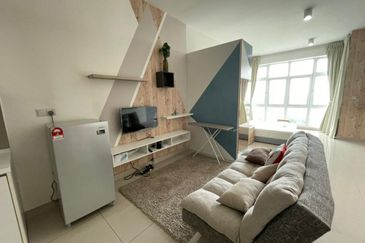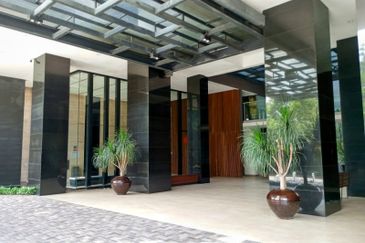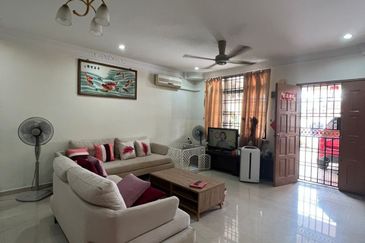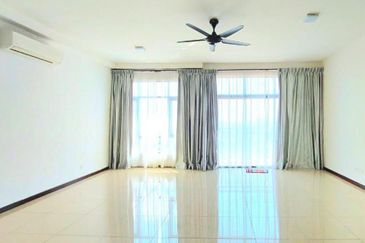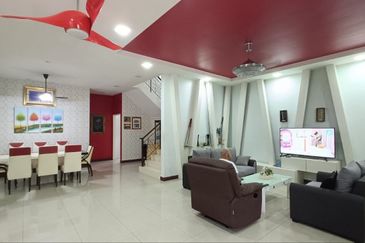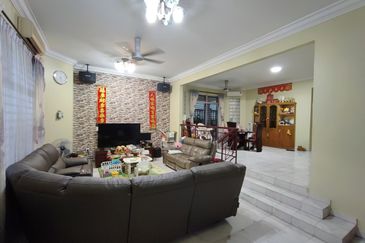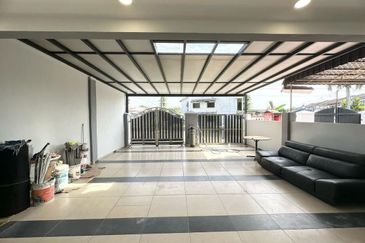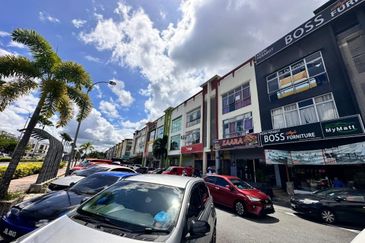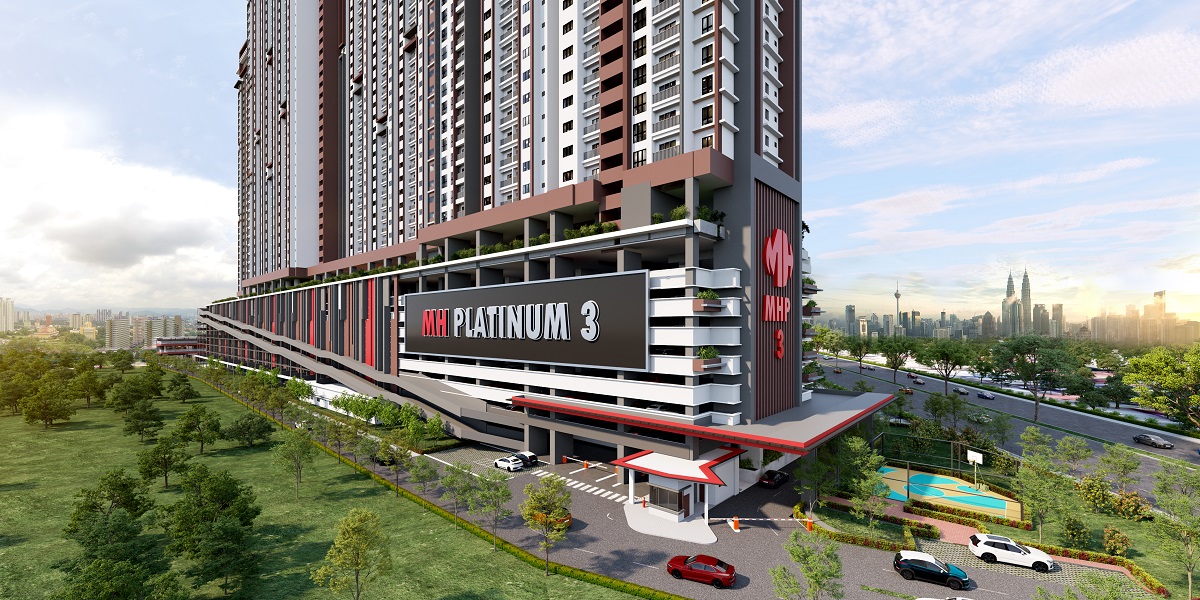As air travel became more accessible to the average person - thanks to the introduction of low-cost air carriers - many countries soon realised the importance of first impressions and started tapping the talents of architects and making investments in the billions to transform their busiest terminals into fully functional works of art.
The renewed modern wave in airport design kicked off in Asia, with the likes of Beijing and Incheon in South Korea. The rest of the world then took the trend and ran with it. Now, terminals from all over the world are undergoing total transformations, pushing the boundaries of architecture in inspiring ways while staying true to their respective cultural identities and sensibilities.
The resulting structures are not only getting more interesting and inviting, but they've managed to transform the flying experience for jet setters. While not all airport have received unanimous raves, the ones compiled here from various websites have certainly been the subject of admiration and inspiration.
The TWA Flight Center at the John F Kennedy International Airport in New York has been hailed as an architectural masterpiece that is ahead of its time - with its futuristic designs from the Sixties, when air travel was viewed as glamorous and an exciting experience. Meanwhile, the Lyon-Saint ¨¦xup¨¦ry Airport in France, which features a massive fan-shaped entrance, is another airport that has aged well.
Certain airports have sprung up as a symbol of a country's advancement on the world stage. Such is the case of the Beijing International Airport, which grew from a simple one-terminal airport to becoming the second-busiest airport in the world, while the many innovations and ongoing plans for South Korea's Incheon International Airport is set to amaze travellers for many years to come.
The Samui Airport in Koh Samui island in Thailand and Morocco's Marrakech Menara Airport were added to the list for their design, which incorporates the best of local culture. Samui Airport, with its green features and open layout, lends a resort-like feel while the sleek makeover of the Marrakech Menara Airport in recent years marries the very best of modern architecture with rich Moroccan elements.
Other airports were selected because of their unusual and unique structures that stand out in comparison to their counterparts in other countries. This includes the Denver International Airport, which drew inspiration from the Rocky Mountains.
Madrid Barajas Airport
Madrid-Barajas Airport Terminal 4, which serves all international flights in Madrid, Spain, is an intelligently designed structure that uses the simple concept of colours to enable easy navigation for travellers. This helped the airport win the 2006 Stirling Prize for architecture. When viewed from afar, the gradual colour saturation resembles a rainbow.
There is nothing more frustrating than getting lost in an airport. With this in mind, architects from Richard Rogers in partnership with Estudio Lamela, used light-filled-colour-coded beams to divide the parallel floors that accommodate the various stages of passenger processing - from the point of arrival, check-in and passport and security controls, to departure lounges and, finally, the aircraft.
In addition, the clear, colour-coded signs group together directions for gates while the multi-level walkways reduce traffic on each individual level.
The building's legible, modular design creates a repeating sequence of waves formed by vast wings of prefabricated steel. Supported on central "trees", the great roof is punctuated by roof lights, providing carefully controlled natural light throughout the upper level of the terminal.
A simple palette of materials and straightforward detailing reinforce the direct character of the architecture. Internally, the roof is clad in bamboo strips, giving it a smooth and seamless appearance. In contrast, the structural "trees" are painted to create a kilometre-long vista of graduated colour. The lower levels of the building house baggage handling, storage and plant areas, and offer a striking contrast to the lightweight transparency of the passenger areas above.
Marrakech Menara Airport
Marrakech Menara Airport serves Marrakech in Morocco. The airport traces its humble roots back to World War I, when it was used by the US Army Air Force Air Transport Command as a hub for cargo, transiting aircraft and personnel.
After the war ended, it functioned as a stopover en route to Casablanca Airfield or to Agadir Airport on the North African Cairo-Dakar transport route for cargo.
However, it was the launch of cheap flights from Europe to Morocco in the late 1990s that really put Marrakech Menara Airport on the international aviation map.
This resulted in an overdue architectural makeover led by K2A Archictecture.
The new stylish Marrakech Menara Airport has managed to tastefully combine the best of the rich Moroccan tradition and modern contemporary designs to create a luxurious looking airport.
Giant rhomboid skylights fitted with photovoltaic panels filter the sun while intricate Islamic geometric and nature motifs are inscribed onto a giant network of concrete diamond openings that follow the curve of the building's roof, morphing into frosted glass walls.
At night, coloured lights dance along the front face of the building, illuminating the desert plantings along the arrivals roadway. A lounge inside evokes 19th-century Moroccan luxury, with rich colours, rugs, chandeliers and a wrought-metal dome.
Incheon Airport
Since opening in 2001, awards have been arriving at South Korea's Incheon International Airport as frequently as aircraft. The airport was ranked as the world's leading airport by Airport Council International's Airport Service Quality Award, the first airport to claim pole position for seven years (2005-2012) in a row.
In 2008, Incheon received the prestigious Eagle Award from the International Air Transport Association while market research firm Frost & Sullivan labelled it as the Best Airport in Asia-Pacific in 2009.
Amazingly, Incheon - which was designed by Fentress Bradburn Architects and is operated by Incheon International Airport Corp (IIAC) - is sited on a piece of reclaimed land located between two islands, Yeongjong island and Yongyu island.
To keep up with the demand, IIAC has adopted a rapid expansion policy that has enabled passenger capacity at the airport to double to 30 million in 2007 from 14.5 million in 2001. Incheon has also become an East Asian base for leading global logistics firms, such as DHL, AMB and Shenker.
Incheon is a work in progress and has established its reputation by carefully investing in a range of different operational capabilities. There are ongoing plans to develop Incheon into a centre for Korean culture and art by establishing a series of museums and exhibition halls within its passenger terminal.
The airport also plans to be carbon neutral by 2013 by incorporating solar panels that can generate 100kW of energy as well as five wind power turbines with a generating capacity of 10kW. IIAC will also install a pioneering magnetic levitation train. The next-generation train will run using magnetic power and will, therefore, create less vibration and noise than normal trains.
The airport is currently embarking on its third phase of expansion, which is scheduled for completion in 2015 and will include the construction of a second passenger terminal, an expansion of the existing cargo terminal and an enlargement of the airport's apron, as well as further extension of road and rail links to the second passenger terminal.
A fourth and final construction phase is expected to be completed before 2020.
Beijing International Airport
Beijing International Airport in China has certainly blossomed since 1950s. It has grown from one small terminal building - which still stands to this day - to becoming the busiest airport in Asia. Beijing International Airport is also one of the largest landmarks in the People's Republic of China, and represents the growing and developing Chinese city.
Following the completion of Terminal Three in 2008, in time for the Olympics, Beijing International Airport became the largest man-made structure in the world in terms of area covered. In the past decade, it has rapidly ascended the rankings of the world's busiest airports. It is currently the second-busiest airport in the world.
According to Norman Foster of internationally renowned firm Foster + Partners, which was commissioned to design the airport, Beijing International Airport's new design communicates a uniquely Chinese sense of place and will be a true gateway to the nation.
This is expressed by its dragon-like form and the soaring roof that is a blaze of "traditional" Chinese colours - imperial reds merge into golden yellows. Along the central axis, the red columns stretching ahead evoke images of a Chinese temple.
The terminal building is also one of the world's most sustainable, incorporating a range of passive environmental design concepts, such as the southeast-orientated skylights that maximise heat gained from the early morning sun, and an integrated environment-control system that minimises energy consumption. The single unifying roof canopy is perforated with skylights to aid orientation and bring daylight deep into the building.
Rather than the sprawl of many separate buildings, Beijing International Airport uses less land by bringing everything closer together for ease of communication in one efficient structure.
Samui Airport
There are many airports in exotic locations around the world, but Samui Airport - located at the northern part of the island near Bo Pud Beach in Koh Samui, Thailand - stays true to the identity of the location. It is known as one of the most picturesque and environmentally-friendly airports in town.
Privately-owned Samui Airport is the brainchild of Dr Prasert Prasarttong-Osoth, president and CEO of Bangkok Airways, who wanted an airport on the island to help establish his new airline.
Samui Airport has been designed to fit into its surroundings while being kind to the environment. Built using local materials, such as palm, wood and rattan, the largely open-plan design often negates the need for air conditioning, despite it being the sixth-busiest airport in the Land of Smiles - handling more than a million passengers annually.
Samui Airport has won several awards for its green features and resort-like design, which is said to incorporate both Polynesian and Thai elements. It gained first place in the Outstanding Architecture Competition staged by Siam Architects under the patronage of the King of Thailand in 1998 and won a Board of National Environment Award for aviation environmental protection and awareness in 1989.
Construction on the airport began in 1982 and it officially commenced operations on April 25, 1989. Soon after, it won the Environment Impact Assessment Award for the use of locally produced palm leaves and natural, open-air cooling system. The airstrip is 2,100m long while the main facility is outfitted with the highest safety-standard equipment, modern communications, and open-air passenger terminals.
In 1997, Samui Airport was upgraded into a customs airport. The resulting enhancements comprised immigration facilities, customs services, new passenger terminals and additional direct flight routes into Koh Samui.
Formerly known as Lyon Satolas Airport, the Lyon-Saint Éxupéry Airport Airport in France is yet another futuristic-looking building that has aged well. Its most striking profile is the two converging fan-shaped steel arches that resemble a bird in flight.
However, Calatrava - the architect who designed the airport - insists this was not the original idea. "I never thought of a bird, but more of the research that I am sometimes pretentious enough to call sculpture", which is inspired more by the shape of the human eye.
The two massive steel arches, which are around 120m long and 40m in height, spread out on the ceiling, allowing natural light to come in through the openings.
On April 12, 1975, Lyon Satolas Airport was inaugurated by then-president Valéry Giscard d'Estaing and it started operations shortly thereafter. Although a high-speed train station (Gare de Saint-Éxupéry) connected to the airport was added in mid-1990, Calatrava's aspirations for the airport to serve as an international hub for the region failed, as only a handful of people use the high-speed train daily.
TWA Flight Centre, John F Kennedy International Airport
Finnish-American architect Eero Saarinen, who was commissioned to design the TWA Flight Center or Trans World Flight Center, was way ahead of his time when he decided to go ahead with plans for a futuristic looking airport in the Fifties.
The structure takes on the form of a huge bird in mid-air, with its wings spread ready for landing. This was made so that it captures the "spirit of flight". The TWA Flight Center took six years to be completed and when it opened its doors to the public in 1962, it was celebrated as an architectural masterpiece.
Also known as Terminal 5, the structure was a standalone terminal at New York City's John F Kennedy International Airport (previously known as Idlewild Airport) for the now-defunct Trans World Airlines, which went bankrupt and was purchased by American Airlines in 2001.
Following American Airlines' buyout of TWA, the TWA Flight Center went out of service. The Port Authority of New York and New Jersey had proposed converting the main portion of the building into a restaurant and conference centre, but some architectural critics opposed this move.
In December 2005, JetBlue - which occupies the adjacent Terminal 6 - began construction of an expanded terminal facility that utilises the front portion of Saarinen's Terminal 5 as an entry point. The terminal has since undergone a US$20 million renovation to return the structure to its former glory.
The City of New York designated both the interiors and exteriors of the terminal as a historic landmark in 1994. In 2005, the National Park Service listed the Trans World Flight Center on the National Register of Historic Places.
Future plans for the structure could include adapting the space into a boutique airport hotel, in addition to using it to host an exhibit celebrating the terminal's history at JFK Airport.
Besides being well-known to JFK passengers and architectural buffs, it was also the site of the filming of Steven Spielberg's Catch Me if You Can.
Denver International Airport
Rising above the Colorado Desert in the US is the Denver International Airport, a mass of white that strongly resembles a cluster of tepees and is the largest airport in the country by total area.
The internationally-recognised peaked roof of the airport, which ranked fourth on the list of "Favourite American Architecture" landmarks by The American Institute of Architects, was designed by Fentress Bradburn Architects. According to the firm, it drew inspiration for the unusual structure from the majestic snow-capped peaks of the Rocky Mountains, Colorado's international signature that can be seen looming in the background of the airport.
When Denver International Airport was completed in 1995, it was the largest fully-enclosed, integrated tensile fabric structure in the world. The pedestrian bridge that links the terminal and the concourse uses the same tensile principle that provided the foundation for a highly green airport via the use of natural daylight that bathes the interior of the terminal through numerous clerestories, curtain-walls (with a low-e coating) and a translucent roof.
The material used for the roof of the building also reflects 20% of solar radiation in the summer and retains heat in the winter. Recent additions, which supports the green movement, include operational improvements (such as recycling) and solar power generation.
Interestingly, there are several conspiracy theories that have sprung up relating to the airport's unusual design and construction, with some claiming that the airport was built on top of a secret military bunker. Others claimed that the various markings on the building are linked to Satanic and Masonic cult or some impenetrable secret code of the New World Order.
This story first appeared in The Edge weekly edition of Dec 24-31, 2012.
TOP PICKS BY EDGEPROP
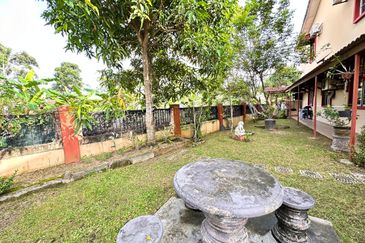
Taman Bukit Indah @ Iskandar Puteri
Johor Bahru, Johor
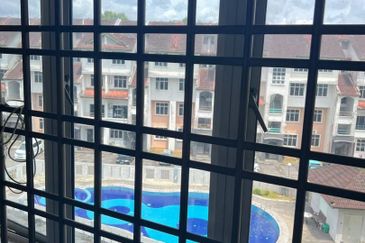
Summer Park Townhouse (Pangsapuri Alam Jaya), Bandar Baru Seri Alam
Masai, Johor
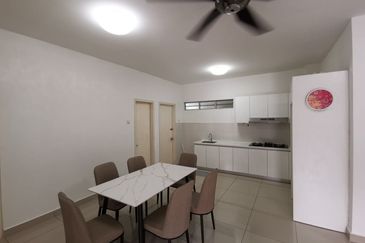
Idaman Residence
Iskandar Puteri (Nusajaya), Johor



